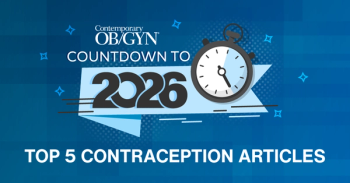
Oral contraceptive and ovarian function
A prospective study to assess the effects of an oral contraceptive containing estetrol and drospirenone on ovarian function found treatment achieved complete ovulation inhibition.
The European prospective study in the journal Contraception compared estetrol 15 mg/drospirenone 3 mg (E4/DRSP) to ethinylestradiol 20 µg/drospirenone 3 mg (EE/DRSP) in a 24/4-day regimen for 3 consecutive cycles.
Interestingly, complete ovulation inhibition occurred with E4/DRSP, despite the oral contraception exhibiting less suppression of the follicle-stimulating hormone (FSH) and the luteinizing hormone (LH) than EE/DRSP.
The single-center, randomized, open-label, parallel study in healthy young women with proven ovulatory cycles was conducted at Dinox Female Health Care in Groningen, the Netherlands, between February 2017 and June 2018.
Participants received either E4/DRSP (n=41) or EE/DRSP (n=41).
Follicular size and endometrial thickness were measured by transvaginal ultrasound every 3 days in cycles 1 and 3, and blood was sampled for hormone analysis.
Ovarian function expressed as the Hoogland score was based on follicular size, and serum estradiol (E2) and progesterone (P) concentrations.
Ovulation was defined as a ruptured follicle-like structure >13 mm with serum E2 concentrations >100 pmol/L and serum P concentrations >5 nmol/L.
The investigators evaluated return of ovulation after treatment cessation, as well as safety throughout the study.
None of the women ovulated with E4/DRSP treatment; however, during EE/DRSP therapy, one woman ovulated once and another woman ovulated twice.
Most participants had a Hoogland score of 1 (no ovarian activity) in cycle 1: 85.0% of the E4/DRSP group and 82.9% of the EE/DRSP group.
For cycle 3, a Hoogland score of 1 was attained by 65.8% of women in the E4/DRSP group vs. 83.8% in the EE/DRSP group.
Suppression of FSH and LH concentrations was less pronounced with E4/DRSP than with EE/DRSP.
“The reduced pituitary suppression with E4/DRSP probably caused the minor differences in ovarian suppression in cycle 3,” wrote the authors.
More women developed an active follicle-like structure (FLS) during treatment with E4/DRSP than with EE/DRSP: 21.1% vs. 5.4%. This resulted in a slightly larger mean FLS diameter and associated higher Hoogland 4 scores.
According to the authors, these small differences have no clinical significance.
In addition, both treatments comparably suppressed E2 and P and endometrial thickness.
In the E4/DRSP group, ovulation occurred on average 15.5 days (range 10 to 22 days) after the last placebo tablet, whereas in the EE/DRSP group it was 18.1 days (range 6 to 25 days) after the last placebo tablet.
Reported treatment-related adverse events that occurred in greater than 5% of the entire cohort were breast pain, breast enlargement, headache, emotional lability, nausea, lower abdominal pain, and acne.
There was a similar frequency of these treatment-related adverse events for both groups, except for breast pain, which was reported by 11 women on E4/DRSP and 4 women on EE/DRSP.
Most treatment-related adverse events were of mild or moderate intensity.
However, 3 women in the E4/DRSP group reported an adverse event of severe intensity: gastroenteritis, emotional lability and stress. This compared to 2 women in the EE/DRSP group:emotional lability and depressed mood.
Other safety assessments did not show significant abnormalities.
“If it becomes commercially available, E4/DRSP, containing a naturally occurring estrogen, should be as effective as EE/DRSP,” wrote the authors.
__
Reference
Duijkers I, Klipping C, Kinet V, et al.Effects of an oral contraceptive containing estetrol and drospirenone on ovarian function. Contraception. Published online March 6, 2021. doi:10.1016/j.contraception.2021.03.003
Newsletter
Get the latest clinical updates, case studies, and expert commentary in obstetric and gynecologic care. Sign up now to stay informed.




